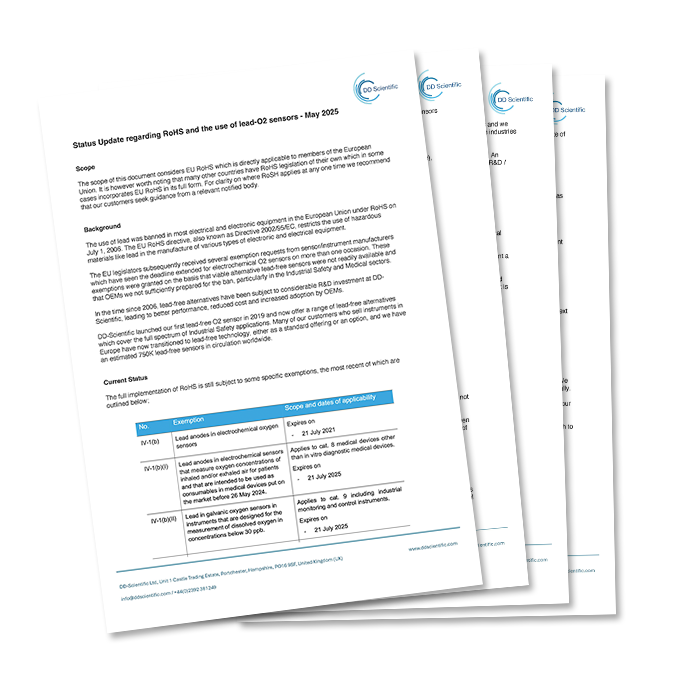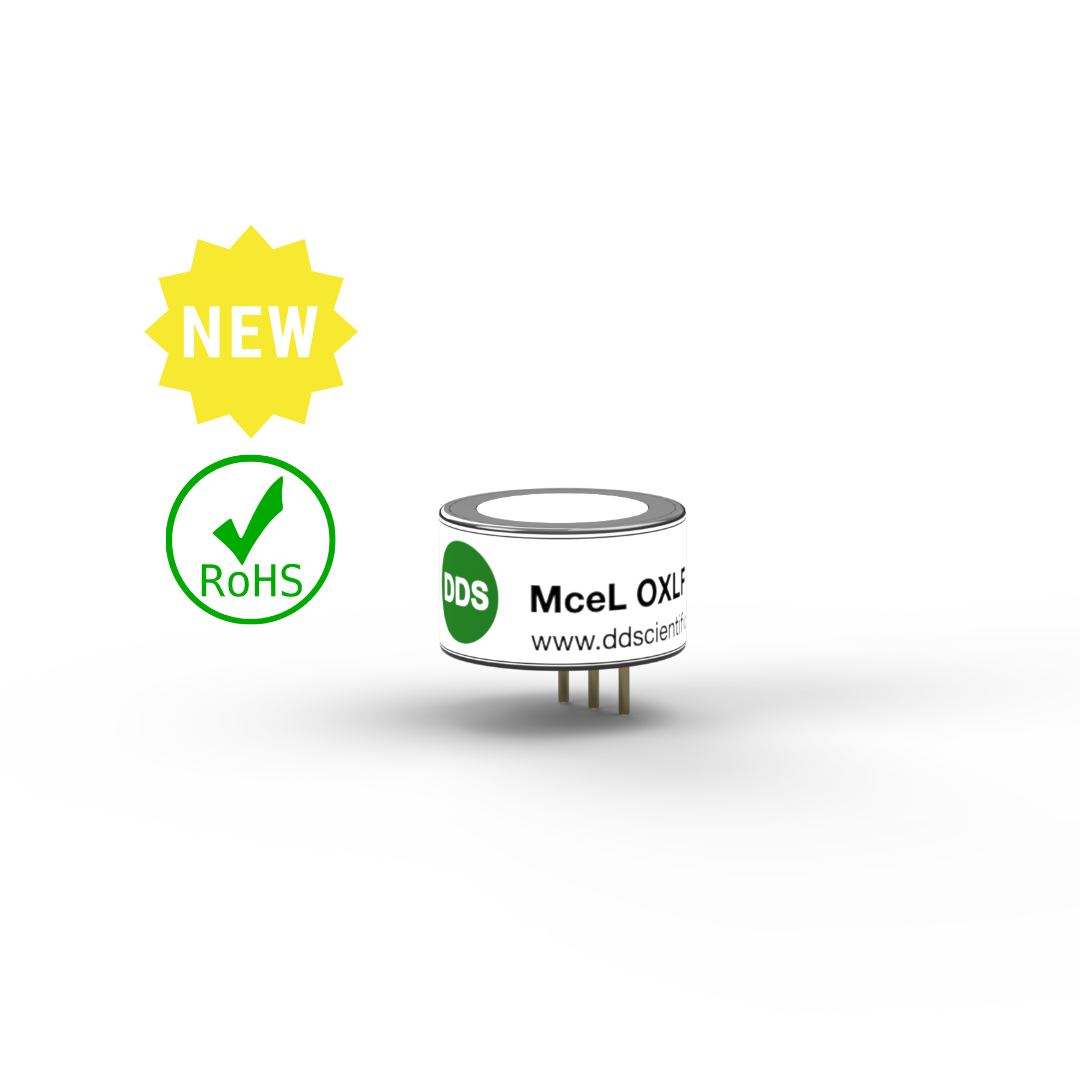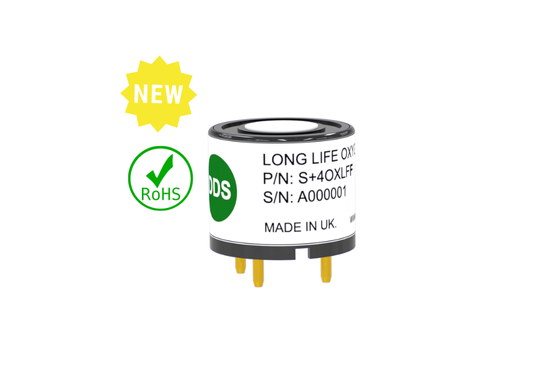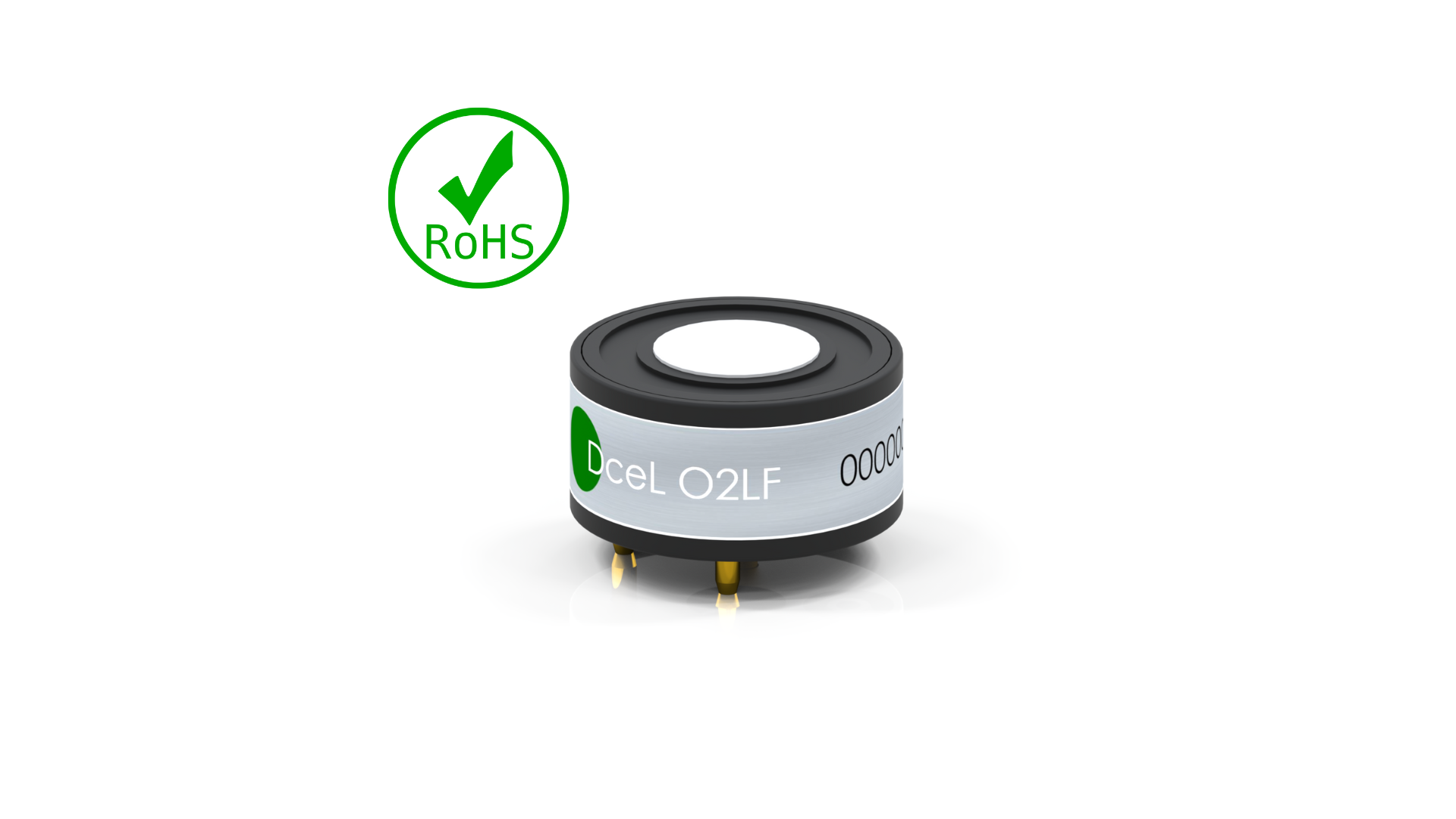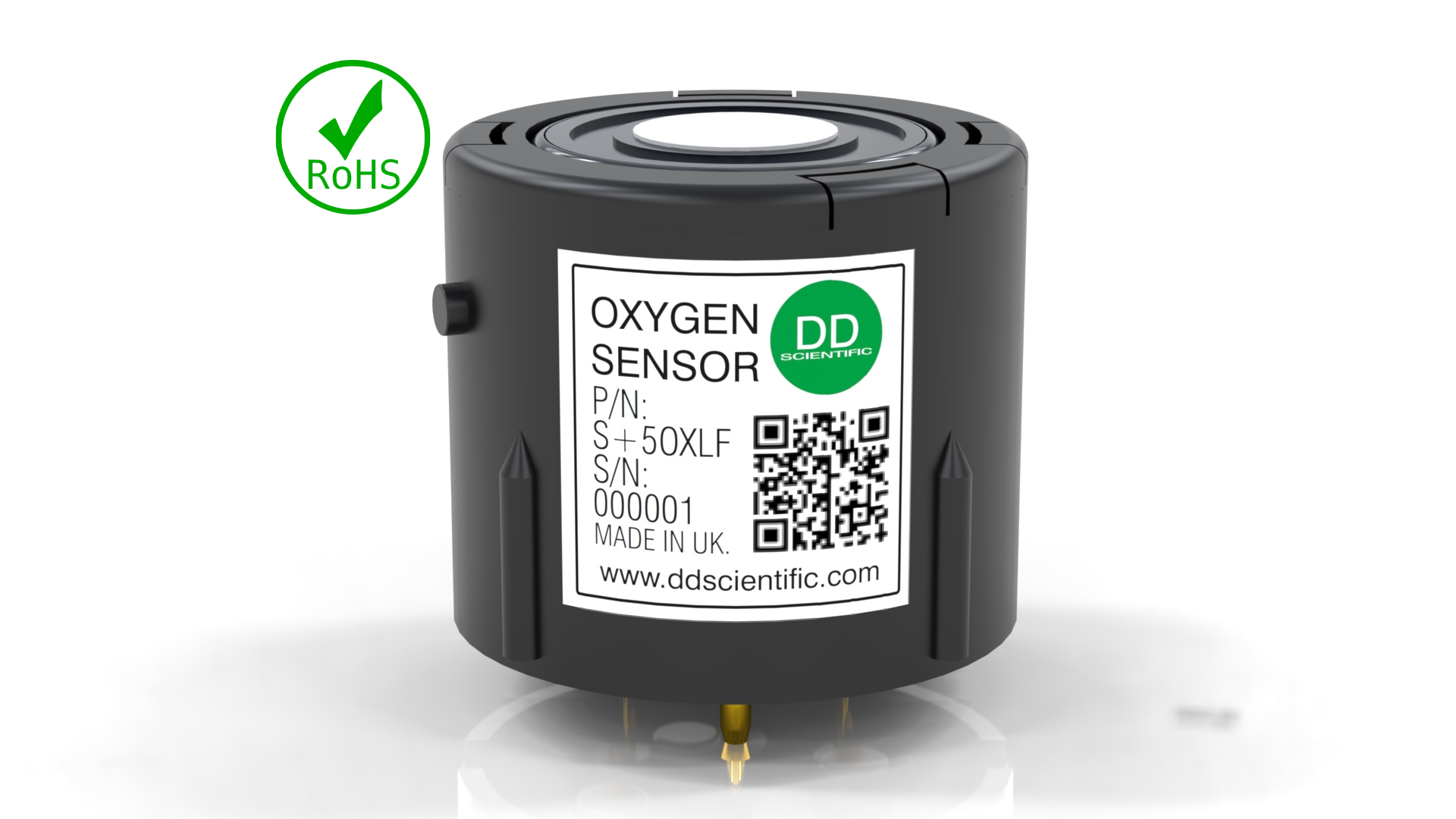What RoHS means for the gas detection industry and why its impact reaches beyond the EU
RoHS is not a new topic of conversation for the gas detection industry but one which continues to challenge our customers and generate questions from instrument OEMs around the globe.
Our white paper 'RoHS and the Use of Lead Oxygen Sensors in Gas Instruments' provides a comprehensive overview of RoHS and its wider impact, as well as informing customers of the latest updates on its implementation timeline.
What is RoHS?
The Restriction of Hazardous Substances Directive 2002/95/EC, or RoHS as it is more commonly known, has restricted the use of lead and other hazardous substances in most electrical and electronic equipment sold in the EU since July 1st 2006.
Until recently, a small number of products, including electrochemical gas sensors, were exempt from the legislation, allowing manufacturers to continue to supply galvanic lead O2 sensors in their instruments.
Recently, the last of the formal exemptions (IV-1[b]), which until now have shielded the gas detection industry from fully complying with RoHS, has passed. Full implementation of the directive has however been delayed further by multiple extension requests, meaning the deadline is still under review with the EU legislators.
Is it only the EU which is impacted by RoHS?
Directly, RoHS impacts any instrument manufacturer, reseller or distributor who sells instruments using O2 sensors which contain lead within the EU or regions which are aligned with EU legislation.
Indirectly, RoHS legislation is driving advances in sensor technology and instrument design which are influencing end-user expectations and bid-specifications on a global scale. This has lead some OEMs to standardise on lead-free O2 sensors globally.
Is the use of lead in O2 sensors banned in the EU already?
No. Whilst all previous exemption end dates have now passed, the EU are considering a number of new exemption requests which were entered prior to that expiration.
This takes an indefinite period of time, during which the previous exemptions are effectively rolled forward. The industry currently has no set date to work to whilst the EU consider the requests and how to move forward.
The use of lead-based O2 sensors will ultimately be banned in the EU and other regions who are aligned with EU policy - the question is when rather than if.
So when does the ban come into force?
Potentially very soon. Whilst the official implementation date is not formally confirmed, our links to industry bodies, working groups and customers around the globe help us to form an assessment of the likely outcome of the situation.
If I don't sell in the EU, how does this affect me?
Firstly, it's worth noting that EU legislation applies to a number of regions outside of the EU, most notably the UK but also a number of other countries.
Secondly, the presence of RoHS has driven innovation in gas sensors, resulting in lead-free solutions which have an inherently longer life than lead-O2 sensors. This has driven the prevalence of low-maintenance devices and raised the expectations of end-users beyond the traditional 2-3 year service interval, in some cases seeing bid-specs outside of the EU demand O2 sensors with a 5-year working life.
These factors, coupled with increasing awareness of environmental issues and corporate responsibility are driving many manufacturers to adopt lead-free O2 sensors as their standard global offering.
Where can I get further guidance on RoHS and its impact on my business?
Download our white paper "RoHS and the Use of Lead Oxygen Sensors in Gas Instruments" to find out more.
If you still have questions or require assistance in implementing a RoHS compliant sensor solution, we will be glad to share our experience.
To start a conversation please don't hesitate to get in touch.
